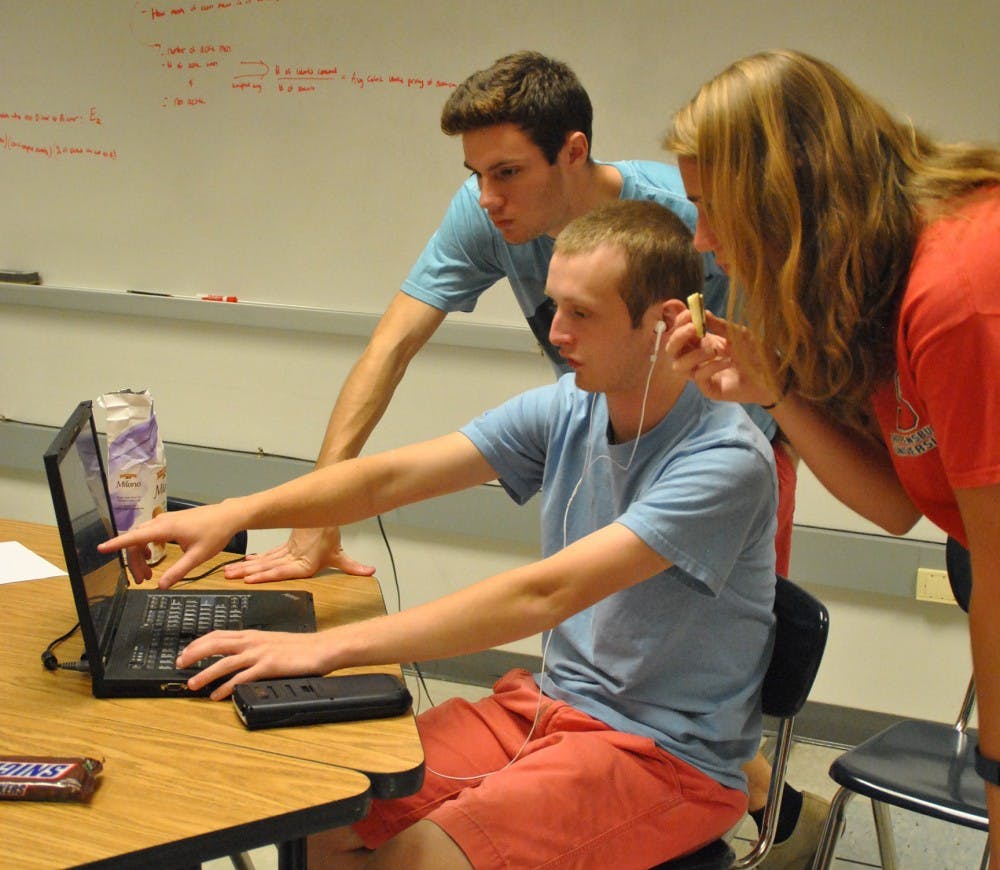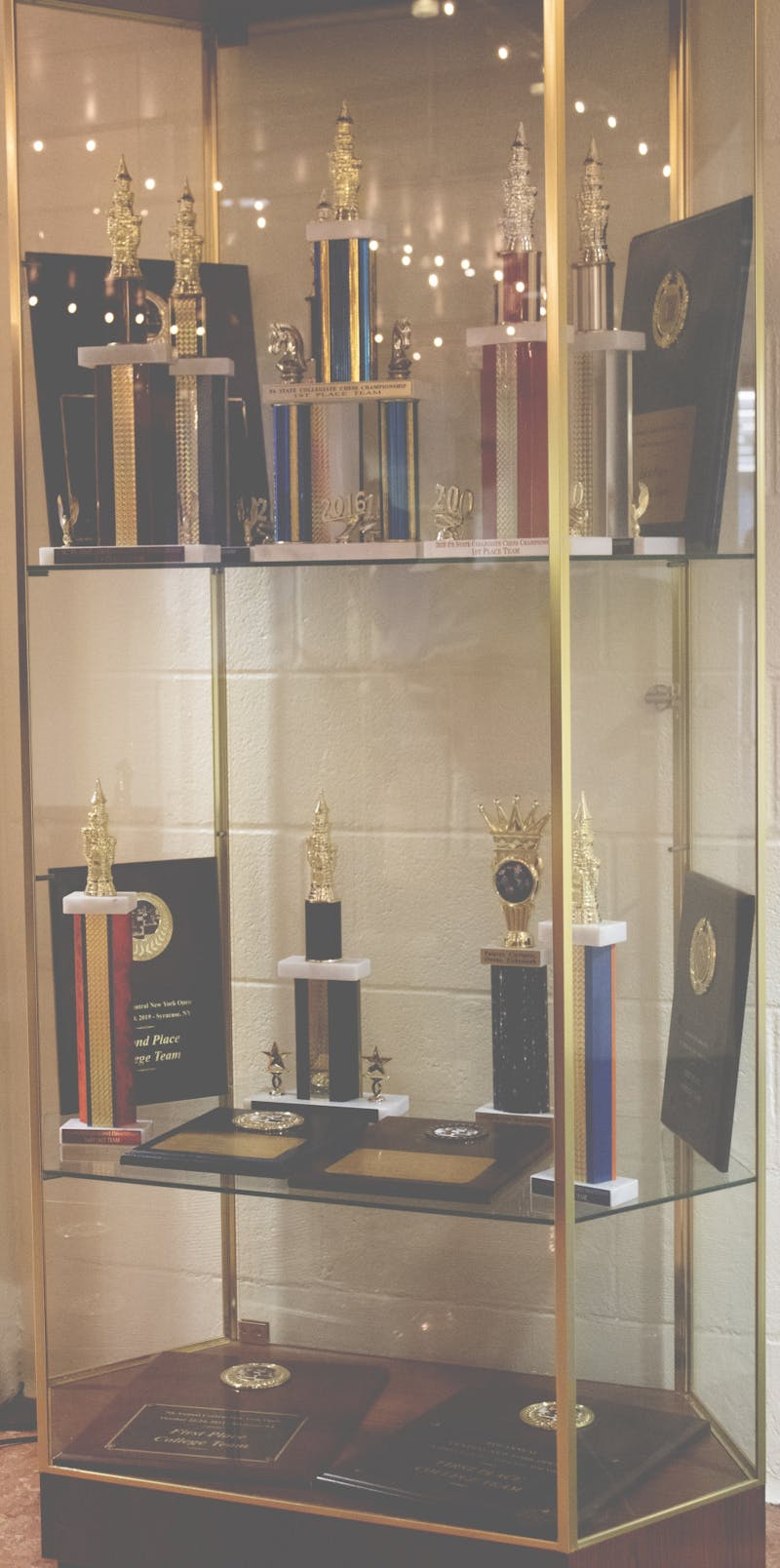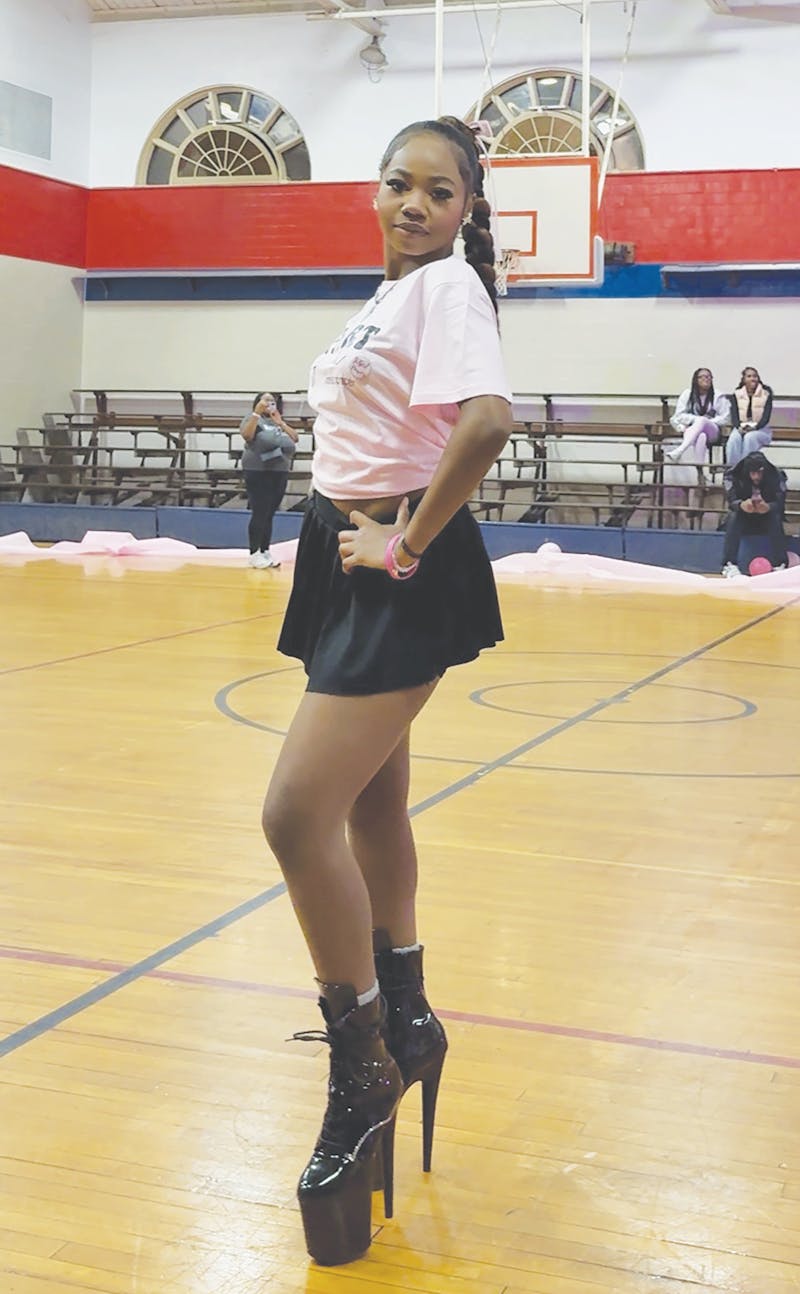Inside the Dauphin Humanities Center Saturday night, 21 students buckled down for a lock-in. It was an average slumber party — complete with soda, chips, sugar — and oh yeah, 24 hours of math.
For the seventh year, Shippensburg University hosted the Cumberland Valley Math Modeling Challenge, a 24-hour competition for groups of three students to solve one of two applied math problems.
SU math professor, Ben Galluzzo has spear-headed the Modeling Challenge at SU for the past seven years by basing it off an international 96-hour competition called Mathemtical Contest in Modeling.
This year, two SU teams competed along with five other teams from six colleges, one of which only had one participant, who was added to another team.
Applied math is using math in the real world by creating a function, plugging in numbers and getting an outcome, Galluzzo said.
The end result of the Modeling Challenge is a one-page explanation that is judged by SU faculty on a scale of one to five. The actual winner of the challenge is decided by the participating students who listen to each other present and then vote on the best solution.
The United States Military Academy of West Point won the oral part of the challenge.
“You’re not answering a question [where] the answer is 14. It’s not going to be a fixed answer, and it’s not going to be a known answer,” Galluzzo said. “In fact, no one probably knows the correct answer.”
Shelby Young, a senior at SU and a competitor in the Modeling Challenge, sat in a room in Mathematics and Computing Technologies Center with her two teammates and three chalk-board walls splattered with their math problem — which was to evenly distribute 160,000 Syrian refugees across 28 European Union nations.
“It’s becoming a really difficult problem because there is no right answer,” Young said.
Young’s teammate, Sharyn Mowen, SU junior, piped in and said that in her applied math class, that is how all the problems are.
The only way to be wrong is to not properly defend your answer, Shelby said.
Across the hallway, the second SU team debated the nutritional, economic and environmental impacts of a “meatless Monday” in a college dining hall. It almost seemed normal to hear teammates senior Lara John and sophomore Adam Yosua debate how to extrapolate the environmental impacts of a chicken patty while their third teammate, junior David George, created a chart of average meals at Reisner Dining Hall.
“I’ve never taken a math modeling class, so this is all knew to me,” Yosua said.
As a computer science major, Yosua said he came in with a different way of thinking than a math student. Yosua said he would have analyzed previous data instead of using assumptions about the situation to find a solution.
“You can predict stuff that you never would have thought you could predict,” Yosua said.
However, Galluzzo said that for the Modeling Challenge, students do not need to know applied math because they already have “tools” in their “math toolbox” that they can use to solve the problem.
“[Applied math] is everything that people think math isn’t, but it’s how math is used in the real world,” Galluzzo said.
The equations involved in applied math can be difficult, but they do not have to be, Galluzzo said. Applied math is used for decision making and critical thinking, Galluzzo said, so oftentimes people use it without even realizing they are using applied math.
“A lot of times people can just talk without even realizing that they spoke using math,” Galluzzo said.




The Slate welcomes thoughtful discussion on all of our stories, but please keep comments civil and on-topic. Read our full guidelines here.